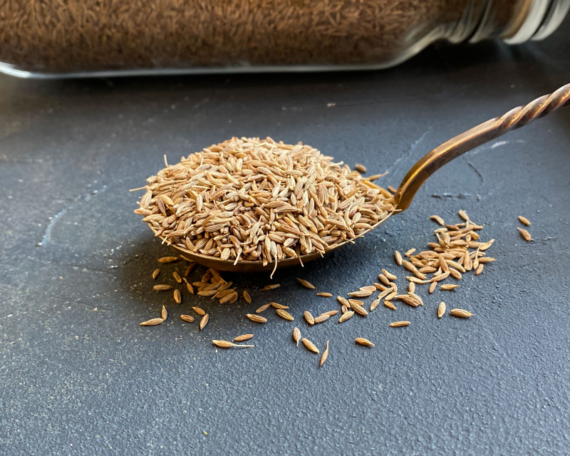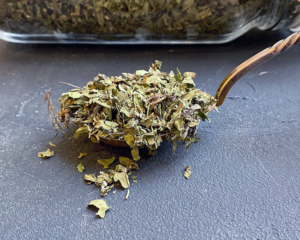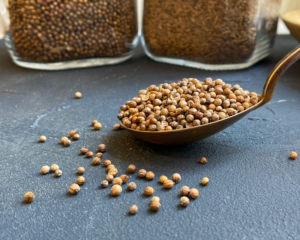Organic cumin seeds
From 3.05€
From spicy Latin dishes to savoury Indian and Middle Eastern cuisine, cumin knows no borders. Although it is a small, simple seed, it has a special flavour that complements a variety of dishes. From curries to cheeses and sauces, cumin is a staple in many international favourites and is widely loved around the world.
In the Middle East, North Africa and India, as an essential spice in national dishes such as couscous, baharat, chutney and curries.
Cumin seeds are the small dried fruit of a small Umbelliferae plant belonging to the same plant family as parsley, carrots, dill and caraway. The plant is native to the Mediterranean region and Egypt, and is cultivated in the western Mediterranean via the Middle East and India.
Since cumin is adapted to both warm and cool climates, they are easily cultivated worldwide. By the way, India is the largest producer and consumer of this popular spice.
Cumin seeds (Cuminum cyminum) are one of the best spices for supporting healthy digestion. In India, its Sanskrit name literally means “stimulates digestion”. In addition to adding flavour to food, cumin also stimulates the digestive fire, promoting healthy absorption and removing toxins from the digestive tract. The seeds are also often chewed after meals to improve digestion and remove food odours.
The seeds of cumin are pale, yellowish-green and oblong in shape. They have nine raised ridges. The seeds are similar to cumin seeds. Not surprisingly, cumin seeds are often confused with cumin seeds because of their strong similarity and similar aroma. The most noticeable difference between the two is that cumin seeds are lighter in colour and covered with very fine, barely visible bristles.
Cumin are often described as having a strong flavour, warm and earthy, with a spicy, bittersweet aroma and light citrus undertones. Cumin is usually compared to cumin as a slightly spicier alternative.
Although the colour and flavour vary from region to region, the taste of cumin is less influenced by origin and more by the oil content. The higher the oil content, the more aromatic the cumin.
Cumin seed essential oil content ranges from 2 to 5%, and we obtain the highest quality seeds, with a content ranging from 3 to 5% to ensure an intense flavour. It is important to note that cumin seeds must be kept tightly sealed and protected from moisture.
Tea recipe:
Take ½ teaspoon each of cumin seeds, coriander seeds and fennel seeds.
You can lightly crush the seeds and soak them in 0.5 l of warm water for at least one hour.
Then bring the water with these three ingredients to the boil and simmer on low heat for 15 minutes. Don’t forget to cover the pot.
Allow to cool for 5-10 minutes.
This tea can help you lose weight, get rid of gas and other stomach problems.
All three ingredients in this tea are fat burners, so this tea also reduces fat accumulation in the body.
It is also useful in improving the body’s metabolism, correcting liver function and increasing bile secretion, which promotes proper fat metabolism.
In addition, the tea has a low glycaemic index, which is an added benefit when included in a weight loss diet.
The tea calms the mind and relaxes the nervous system. This effect is due to the coriander and fennel seeds in this tea.
It can be used for babies suffering from gas, colic and acidity, as it reduces the acidity in the stomach and prevents the milk from curdling.
The ingredients in the tea act as antacids and reduce excess acid in the stomach. People suffering from these problems can drink this tea every day.
Cumin and fennel seeds are well-known galactagogues. Tea containing these ingredients increases the amount of breast milk.
Tea has a cleansing effect on the body. You can use this remedy to clean the colon.
The cumin in the tea helps to improve the body’s absorption of essential nutrients.
The tea can help relieve abdominal cramps during menstruation. However, cumin also stimulates menstruation and should not be used in cases of heavy bleeding.
Note
You should avoid it during pregnancy as fennel seeds may be associated with stimulation of uterine contractions.
NOTE. The information contained herein should not be construed as a recommendation for treatment or other health issues. We encourage you to make personal decisions about your personal health, taking into account a wide range of sources of information.
Organic caraway seeds 100%
-
-



